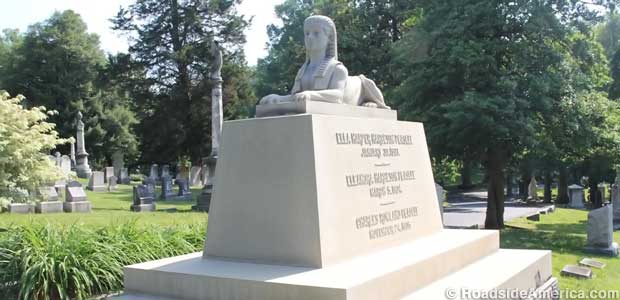Waiting for Anubis
Nikon D7100; Sigma 17-70mm F2.8-4 DC Macro(OS) HSM|C
In the modern world, Americans have had several romances with Egyptian forms as funerary monuments and art. Although elements began appearing at the very beginning of the 19th Century, the first great wave coincided with the Rural Garden Cemetery movement of the mid-1800s. Another wave followed in the late 1860s, and reached its peak between 1890-1910. By the 1920s, thematic elements had been absorbed into the burgeoning Art Deco movement.
"Peaslee" as this sphinx is known lives in the Cave Hill Cemetery of Louisville, KY. Erected in 1907, it guards a section of graves belonging to Charles Rowland Peaslee and his kin. Folk like Harbeson, and Farnsley. This wealthy family became one of Louisville's most important and notable. BTW for scale, he is 14' long...
The title is taken from Jean Cocteau's recasting of the tale of Oedipus and the Riddle. The sphinx awaits Anubis in order to return to heaven. In Egyptology, the sphinx is a guardian of the dead--until such time as a flying spaghetti god whisks them off to forever-wherever.


The Peaslee Sphinx, Louisville, Kentucky
The Peaslee sisters upended Kentucky cemetery convention when they had an Egyptian Sphinx carved for the family plot in 1907.
www.roadsideamerica.com
This image is part of a new curated collection I am working on [ Gardens of the Dead], to be found here:
Cities of the Dead – PapaTango.Photography
 papatango.photography
papatango.photography
















